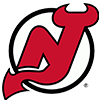In the most recent article in the Scouting 101 series, I talked about the differences in what scouts look for in where they draft pitchers. I identified a few factors that separate a first round pitcher versus a supplemental or even second rounder. In the final articles, I will dive into more details about scouting pitchers. This will cap off a nice run in the series.
In general, there are about 13 aspects to really bear down on when scouting a pitcher. They are listed, in no particular order, as follows. Physicality, durability, delivery, deception, arm action, velocity, movement, command, control, breaking ball, change up, intelligence, and what I like to call "cajones."
I've mentioned physicality before so I won't go into too much detail. In past articles, I touched on the angular body types, using Taijuan Walker as an example. Casey Kelly was referenced in the most recently posted article. We like these body types because of the pure projection they offer. There is usually some length and height, which carries significantly more projection. It also presents a greater proclivity to work downhill and create angle with the fastball (we'll get to this later). I also referenced the shorter, blockier, square body type. Tyler Chatwood was referenced recently. A lack of height is a deterrent because a pitcher will generally have to work "uphill" and can't get as much angle. Most pitchers of smaller stature will throw a lot of two-seam sinkers to combat this obstacle. See Tim Hudson
In the most recent article in the Scouting 101 series, I talked about the differences in what scouts look for in where they draft pitchers. I identified a few factors that separate a first round pitcher versus a supplemental or even second rounder. In the final articles, I will dive into more details about scouting pitchers. This will cap off a nice run in the series.
In general, there are about 13 aspects to really bear down on when scouting a pitcher. They are listed, in no particular order, as follows. Physicality, durability, delivery, deception, arm action, velocity, movement, command, control, breaking ball, change up, intelligence, and what I like to call "cajones."
I've mentioned physicality before so I won't go into too much detail. In past articles, I touched on the angular body types, using Taijuan Walker as an example. Casey Kelly was referenced in the most recently posted article. We like these body types because of the pure projection they offer. There is usually some length and height, which carries significantly more projection. It also presents a greater proclivity to work downhill and create angle with the fastball (we'll get to this later). I also referenced the shorter, blockier, square body type. Tyler Chatwood was referenced recently. A lack of height is a deterrent because a pitcher will generally have to work "uphill" and can't get as much angle. Most pitchers of smaller stature will throw a lot of two-seam sinkers to combat this obstacle. See Tim Hudson as an example. We tend to like very physical body types. Those pitchers who can carry the load for six months, 34 times a year for 6-7 innings per outing. Workhorse is the general idiom used to describe these types of arms. This is not to say that all pitchers with more physical, stronger bodies are workhorses, but as a general rule, to hold up for an entire major league season, one's body has to be in fantastic shape. Tim Hudson, to use an earlier example, is not at all a physical specimen. We'll get into why he has been so durable over the years, later. Typically, those who hold up for a full season and for a decade or more come equipped with a strong frame and tree trunks for legs.
Durability plays right into this and is an extension of physicality. It's not black and white though, and not all physical pitchers are durable, and vice versa. Durability is a tough skill to project and it is generally reserved for a pitcher who has pitched in the big leagues for years. A durable pitcher will demonstrate a three or four-year track record of eating up innings and posting every fifth day. Bronson Arroyo is commonly dubbed as durable. He doesn't fit the prototypical body type of a durable arm, but he pitches close to 200 innings per year. The durable tag is also one used for a pitcher who lacks premium "stuff." Guys like Justin Verlander and Felix Hernandez are technically durable but we don't hear them claimed as such. That's because they are highly skillful and tooled up pitchers. Arroyo, on the other hand is marked as durable to identify as someone who, despite below average stuff, makes up for it with his ability to eat up innings and save a bullpen. When looking for durability among amateurs, or even minor leaguers, it's tough to identify. There is no recipe to distinguish this, as all types of bodies and arms can be associated with this skill. Generally though, pitchers with a little more height, strong cores, physical lower halves, good arm action, and can repeat their delivery can be more projected to be durable in the big leagues. Furthermore, the less effort a delivery produces on an arm is a sign that in the future, the pitcher will have more bullets. Hudson is one example, as quoted before. He has a very easy, drop and drive delivery that he has been able to repeat time and time again. He's short and not very physical, yet his arm works easy and his delivery is compact and simple. As he has aged, he's had more issues with other parts of his body than his arm. This is where his weaker frame is playing more of a factor. He has been more reliable than others his size because of the aforementioned factors though, and I suspect that his arm will hold up for a couple of more years.
I've gone through physicality and durability and began to identify how a delivery factors into our evaluations. We're looking for a simple delivery. The less complex it is, the easier it will be to repeat. Repeating allows a pitcher to be in line with the plate, have a soft landing, his arm will be on time with his body and he should be in a good, repeatable arm slot where he can stay on top of the baseball and work downhill. When pitchers are young, we tend to want to alter their mechanics because we see some aspects of it that make it tough to repeat. This can become dangerous, however, because pitchers are creatures of habit and as easy as it sounds to change a delivery, it is very difficult for a pitcher to be able to do this after years of doing something different. Ideally, we would like every pitcher to have a nice, high leg kick with balance and a straight line before he breaks his hands. We'd like for his arm path to be quick and flow in a crescent moon shape behind his body to his ear. We don't like stabbers (see Ubaldo Jimenez). The bottom line though is, just like a hitter, no matter how you set up or how you create rhythm, all that matters is that your bat head is in the hitting zone at the proper time. The same goes for a pitcher. We want that arm slot in a good spot to get full extension out in front and on top of the baseball. We want your body and arm lined up, as this will allow for optimal command. If your arm drags or doesn't catch up with your body, you will have a difficult time commanding your pitches.
To be continued...


























